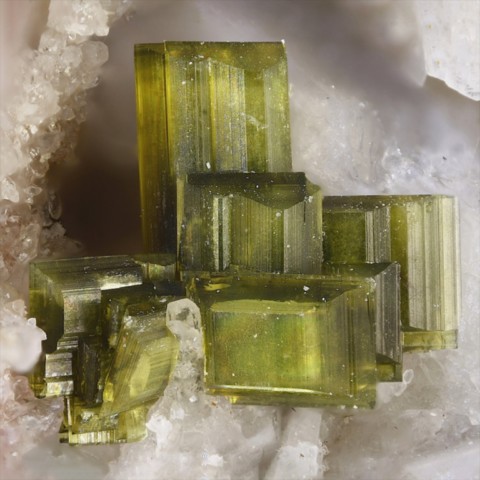SALÉEITE
Class : Phosphates, arsenates, vanadates
Subclass : Uranyl phosphates
Crystal system : Monoclinic
Chemistry : Mg(UO2)2(PO4)2 10H2O
Rarity : Uncommon
Saléeite is a hydrated phosphate of uranium and magnesium found in the oxidation zone of hydrothermal uranium deposits, uranium-bearing polymetallic deposits and uranium pegmatites. It was named in honor of Achille Salée, Professor of Geology at the Catholic University of Louvain (Belgium). Saléeite occurs as square to rectangular lamellar crystals of up to 3 cm, commonly grouped in subparallel aggregates or porous masses, yellow to green-yellow in color. Intergrowths of saléeite and torbernite are known.
Main photo : Saléeite de la Mine de la Commanderie, Deux-Sèvres, France © Jean-Marc Johannet
Saléeite in the World
Twinning
No twinning known for this mineral species.
Fakes and treatments
No fakes listed for this mineral species.
Hardness : 2 to 3
Density : 3.27
Fracture : Micaceous
Streak : White-yellow
TP : Opaque to transparent
RI : 1.554 to 1.585
Birefringence : 0.017
Optical character : Biaxial -
Pleochroism : Visible
Fluorescence : Lemon yellow
Solubility : -
Magnetism : NoneRadioactivity : Very strong





